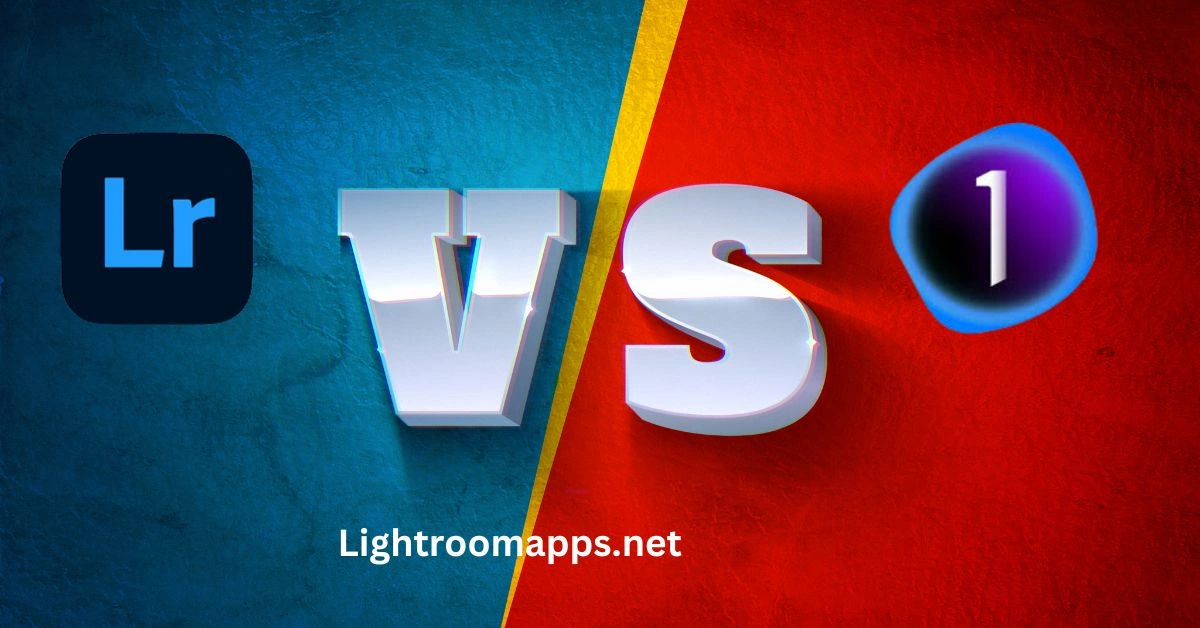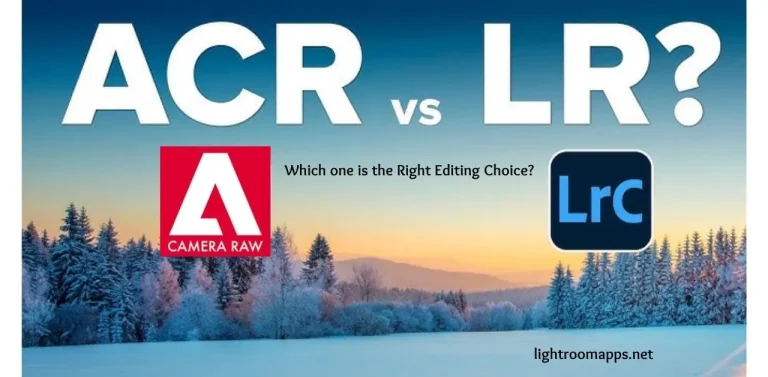Lightroom vs Capture One | A Detailed One-One Comparison Guide [2025]
Are you a beginner who wants to choose the exceptional software to polish your editing skills. Lightroom and Capture One both falls in the digital sea of apps with their advanced features.
However, choosing a better choice among Lightroom vs Capture One is essential. If you haven’t used Lightroom or Capture One but have partial details, this article will help you.
In the era of raw post-processing software, Lightroom is undeniably the winner. However, there are some features that Lightroom lacks, but its rivals, like Capture One, and others, contain them.
Lightroom vs Capture One | Which is Exceptional?
To answer this question of whether Lightroom has outstanding editing abilities or Capture One, we have to compare its features.
By making a detailed comparison and learning about the market dynamics, we will find that Lightroom is more popular.

Its user-friendly design and robust features maintain its dominant position as compared to Capture One.
“By the year of 2023, 46.8% of the photographers moved to Adobe Lightroom whereas only 8% prefer using Capture One. The major reasons to utilize Lightroom over Capture One is the basic editing tasks and cataloging.”
However, there are some features where Capture One beats Lightroom, and you should never miss them.
For instance, you can check the interface, annotation tools, color adjustments, and skin tone tools. The appropriate decision always depends on the users’ requirements.
Note: If you are confused about choosing between Lightroom and Photoshop, look over Lightroom vs Photoshop.
Lightroom vs Capture One | Features Overview
| Features | Lightroom | Capture One (C1) |
| Editing Speed | Slower | Faster |
| Export System | Less User Friendly | User Friendly |
| Panorama Functionality | Available | Not Available |
| Latest Camera RAW Formatting Support | Faster | Slower |
| Custom Color Profiles | Good | Exceptional |
| Layer Functionality | Basic | Advanced |
| Keyword Search Tools (AI Powered) | Present | Not Available |
| Advanced Color Wheel | Basic | Superior |
| Facial Recognition Algorithm | Advanced | Not Available |
| Print Module | Available | Not Available |
| Noise Reduction | Highly Effective | Less Effective |
| Tethering Capabilities | Good | Superior |
| Web Module | Available | Not Available |
| Cloud Synchronization | Seamless | Not Available |
| Modern AI Masking System | Available | Not Available |
| Smart Adjustments | Highly Effective | Less Effective |
| Mobile and Online Editing Integration | Available | Not Available |
| Photo Organization Features | Robust | Limited |
| Pricing | Affordable | Premium |
Adobe Lightroom vs Capture One | User Interface
Beginner photographers have the most common confusion about user interface when choosing among the best photo editing software.
Lightroom boasts powerful editing tools combined with a sleek, user-friendly interface that enhances your creative workflow.
Therefore, beginners often use Lightroom, and it is the most popular choice for them.

However, users prefer Capture One as it offers a changing layout in its interface. You can easily create Capture One keyboard shortcuts from scratch, adjust sliders, and customize the interface.
Besides, you may hide tools in Capture One, whereas Lightroom offers limited customizability.
Editing Capabilities in Capture One vs Adobe Lightroom
The subjective comparison among Lightroom vs Capture One will not be complete until you have a look over the editing tools.
Annotation Tools
Annotation in photography is to add information or metadata to your images. This information contains keywords, location information, dates, or any other things.
You can quickly leverage annotation tools to effectively organize and tag your images. Capture One has robust performance because its annotation tools help users make non-destructive drawings.
Since teams mostly prefer Capture One, you can share these images with your team without spoiling them.
Winner: Capture One
Color Adjustments and Editing Capabilities
Capture One has profound color adjustments and is much more flexible for color adjustments than Lightroom. Capture One offers two ways for color adjustments;
- Advanced Color Wheel
- Pick Color Correction
It’s offhand to make adjustments using the color wheel and maintain the matching shades; you can right-click on the image.
Lightroom offers a streamlined color panel to powerfully adjust hue, saturation, and brightness.
Winner: Capture One
Read Also: Explore different ways to fix blurry photos in Lightroom!

Advanced and Specialized Skin Tone Tools
To get a more natural tone to your edited images, the skin tone tools work perfectly. Capture One has a dedicated color wheel and two groups of sliders in the skin tone tools.
Capture One is superior in advanced and specialized skin tone tools that you can use to adjust the colors on specific parts of images.
Winner: Capture One
Extensive Features of HDR Merge and Panorama
Both Lightroom and Capture One own the extensive features of HDR Merge and Panoramas. Capture One 22 brings HDR merge features.
However, it lacks ghosting or chromatic aberration controls. Capture One’s HDR merge is better than Lightroom as it offers less noise, better details, and advanced editing tools.
Lightroom offers ghosting correction while merging; therefore, Lightroom wins. For Panorama stitching, both software offers; however, Lightroom creates panoramas faster than C1.
Besides, Capture One has a wide range of projection options (cylindrical, spherical, Perspective, Panini), which Lightroom lacks.
Styles and Presets Comparison
n the case of presets, every beginner and professional photographer knows about Lightroom’s presets. Lightroom dominates in presets due to flexibility and efficiency improvement.
Regardless, Capture One offers paid styles instead of presets that have the same purpose as presets. Lightroom is a better choice for the ease of use, speed, and wide accessibility of presets.
Winner: Lightroom
Licensing Module Differences for Lightroom & Capture One
For photographers who want to buy Lightroom or Capture One, it is important to know the differences between the licensing modules.
Lightroom offers two subscription plans for both Lightroom Classic and CC, given below;
- Lightroom Plan (without Photoshop): $9.99/month
- Photography Plan (with Photoshop): $9.99/month
However, Capture One offers perpetual licenses along with subscription options. Having a perpetual license gives the benefit of no renewal options. However, you may find it costly.
Since Capture One can’t integrate with Photoshop or any other editing tool, its subscription options contain its features only.
One of the positive breakthroughs for Lightroom CC is you can use it freely for mobile versions. Whereas, Capture One requires a pricier subscription if you want to use its mobile version.
The all-in-one best-value subscription bundle for Capture One requires $21.58/month, which is much more expensive than Lightroom.
Winner: Lightroom
Photo Organization Tools | Adobe Lightroom vs Capture One
Lightroom and Lightroom Classic both have enough capabilities to compete with Capture One, but still, we can’t ignore photo organization tools.
The leading market dynamics that make Lightroom the robust photo editing software revolve around two features;
- Facial Recognition Technology
- AI-Powered Keyword Search Tool
Whether you are a beginner or a professional, facial recognition technology offers the ultimate benefits. The facial detection feature is fantastic for sorting photos for event photographers.
It easily focuses on the subject of the image while editing, and it becomes quite easy to categorize similar images.
Besides, after importing images to the catalog using the AI keyword search tool, you can find images.
For Capture One, individuals can use the “filter>search” tool to sort images, and we can say that C1 is a step behind Lightroom only for organization tools.
Layer-Based Editing in Adobe Lightroom vs Capture One
Layer-based editing is one of the most effective features that make photo editing software remarkable. It allows users to draw, edit, paste, and reposition elements on a single layer of the image.
Besides, you can easily adjust the tone, apply filters, and have creative control over your editing. Capture One offers the same layer editing options as Photoshop.

On the contrary, if you buy the Photography Plan for Lightroom, where Lightroom integrates with Photoshop, you can do layer editing.
The feature where Lightroom stands different from Capture One for layer-based editing is its brush tool. Hence, Lightroom is preferable to Capture One in this feature.
Effective Tethered Shooting Abilities – LR vs C1
Tethered Shooting means connecting your camera to any device via cable to view and edit images in real time.
By using this feature, photographers can streamline their workflow as the image directly passes to the device.
Capture One offers more effective tethered shooting abilities and has certain benefits over Lightroom, given below;
Capture One is more reliable for tethered Shooting than Lightroom due to its multitude of possibilities.
Winner: Capture One
Pricing Features: Lightroom vs Capture One
One of the significant features to choose the right choice for outstanding editing software is pricing. If we compare the Lightroom price with C1, we will easily decide which one is best according to our budget.
Lightroom offers a $9.99/month subscription plan, whereas Capture One has $21.58/month for the subscription.
That clearly shows that Capture One is 3 times the cost of Lightroom, not the preferred choice for beginners.
Winner: Lightroom
Supporting Devices (Compatibility with Devices)
Another feature that makes Lightroom more popular in the photography community is the supporting devices.
Lightroom supports all devices, whether you are using it on Android, iOS, Windows, iPhone, iPad, or Mac. Its robust features perform on each device perfectly, and users enjoy editing over it.
On the other hand, Capture One is only compatible with iOS and Windows and is not suitable for Android devices.
Winner – Lightroom
Synchronization Options for Lightroom and Capture One
If we observe the sync options for both editing software, Lightroom and Capture One, we’ll surely choose Lightroom.
The reasons why Adobe Lightroom is preferable regarding sync options include its versatility.
For instance, if you have made edits on your mobile phone and synced your phone with a computer, your edits will be saved on your PC automatically.
However, this option is not available in Capture One. You can’t do synchronization while editing in Capture One as it doesn’t offer integration with other devices.
Read Also – How to add watermark in Adobe Lightroom?
Winner: Lightroom
Camera Raw Formats and Lens Correction
While talking about Camera Raw formats, you will again be surprised to know that Adobe Lightroom is superior to Capture One.
Lightroom is compatible with a variety of camera raw formats, including DNG, HEIF, and TIFF in 8, 16, and 32 bits.
It also supports common formats such as JPEG, PSD, PSB, CMYK, PNG, and several video formats. Lens correction is another feature that Lightroom supports.
Using this feature, you can capture image from any outdated camera. The results from both Lightroom Classic and CC would be exceptional.
Capture One is compatible with numerous camera raw formats and offers a wide range of lens correction profiles.
However, some formats are not supported by C1, including Canon RF 24-105 mm f/4-7.1 IS STM and Sigma’s old 8-16mm f/4-5.6 ultra-wide zoom in Nikon F mount.
Winner: Lightroom
Compelling Export Opportunities | Lightroom vs Capture One
Before deciding which option is best, it’s wise to explore the available export opportunities. Using the export options in Lightroom isn’t complex whether you are exporting Lightroom preset, image, or template.
To export the image, just right-click on it and choose the export option. On the other hand, Capture One’s export system isn’t as simple as Adobe Lightroom.
You have to manually add your image, template, or preset in the export lab before hitting the export button.
Still, if you prefer using it, you can make it easy by creating a user-friendly export system. Add output names and process recipes and summaries in the export lab to make the export options easy to use.
Also Read: Choose the best choice over Lightroom vs RawTherapee by analyzing several aspect of both of the editors.
Features that Lightroom Offers but Capture One Doesn’t
The list below is for you to learn the features that are present in Lightroom but not in Capture One.
By using both software and having experience editing from both of them, you will quickly get the features given below;
- Seamless Integration with Photoshop
- Book and map modules help create photo books directly within Lightroom.
- Superior Print Module with advanced layout options
- Mobile Application with Cloud Sync allows users to edit photos on mobile devices seamlessly.
- Denoise Tool, which removes all the noise from the digital images. It is beneficial for users to use this tool for the high IOS files taken in low light conditions.
- Publishing Manager that allows users to publish directly to social media platforms.
- People View and Sensei Search
- A large availability of third-party presets for various effects as compared to Capture One.

Features that Capture One offer but Lightroom Doesn’t
According to individuals who utilize Capture One and Lightroom, some features are provided by Capture but not Lightroom.
Here is a list of the features that may vary according to the user experiences and preferences. Let us have a look over it;

Note: Check out the older versions of Lightroom if you want any!
Adobe Lightroom vs Capture One: Ultimate PROS & CONS
To make the wise choice between Lightroom and Capture One Pro, it’s necessary to have a brief look over the pros and cons. Let us have a look over them;
Pros and Cons of Adobe Lightroom
PROS
CONS
Pros and Cons of Capture One
PROS
CONS
Important FAQs for choosing the Right Choice among LR and C1
A Closure Statement
The most intriguing features that hook me to choose Lightroom are the creative cloud and its synchronization abilities. Besides, face recognition and keyword search AI tools are the bonus advancements of Lightroom.
However, Capture One is my favorite for its tethering abilities, customizable workspaces, and efficient performance. Still, its pricing is very high compared to Lightroom.
For beginners, the right choice is always Lightroom, but for professionals, it’s all about their requirements and needs.







